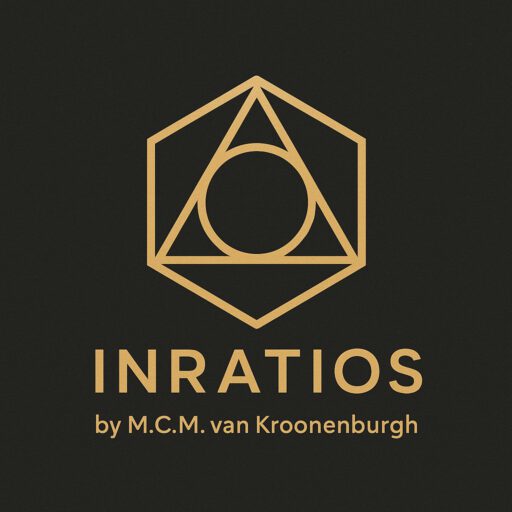Visual Impact (Examples)
The Geometric Ratio Model (GRM) reveals a new way of thinking, not only in logic, but in how we see geometry, proportions, and design.
This page showcases the visual impact of GRM: how simplicity, symmetry, and efficiency emerge naturally once we apply the model. Every image below is based on fixed ratios and geometric truth — no irrational constants, no approximation, just pure proportion.
1. A Circle within a Square – Fixed Ratio Logic
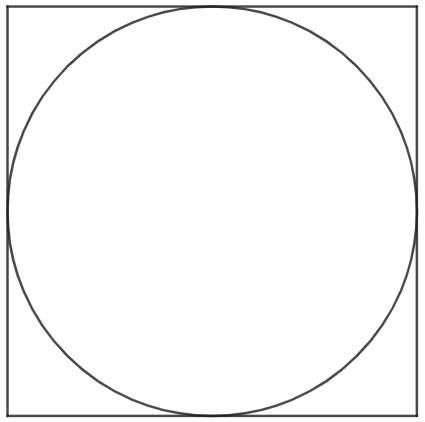
A perfect circle inscribed within a square occupies exactly 0.7854 SAU (Square Area Units). GRM uses this fixed proportion instead of π, enabling clear, ratio-based thinking across digital and physical domains.
2. A Sphere within a Cube – Dimensional Extension
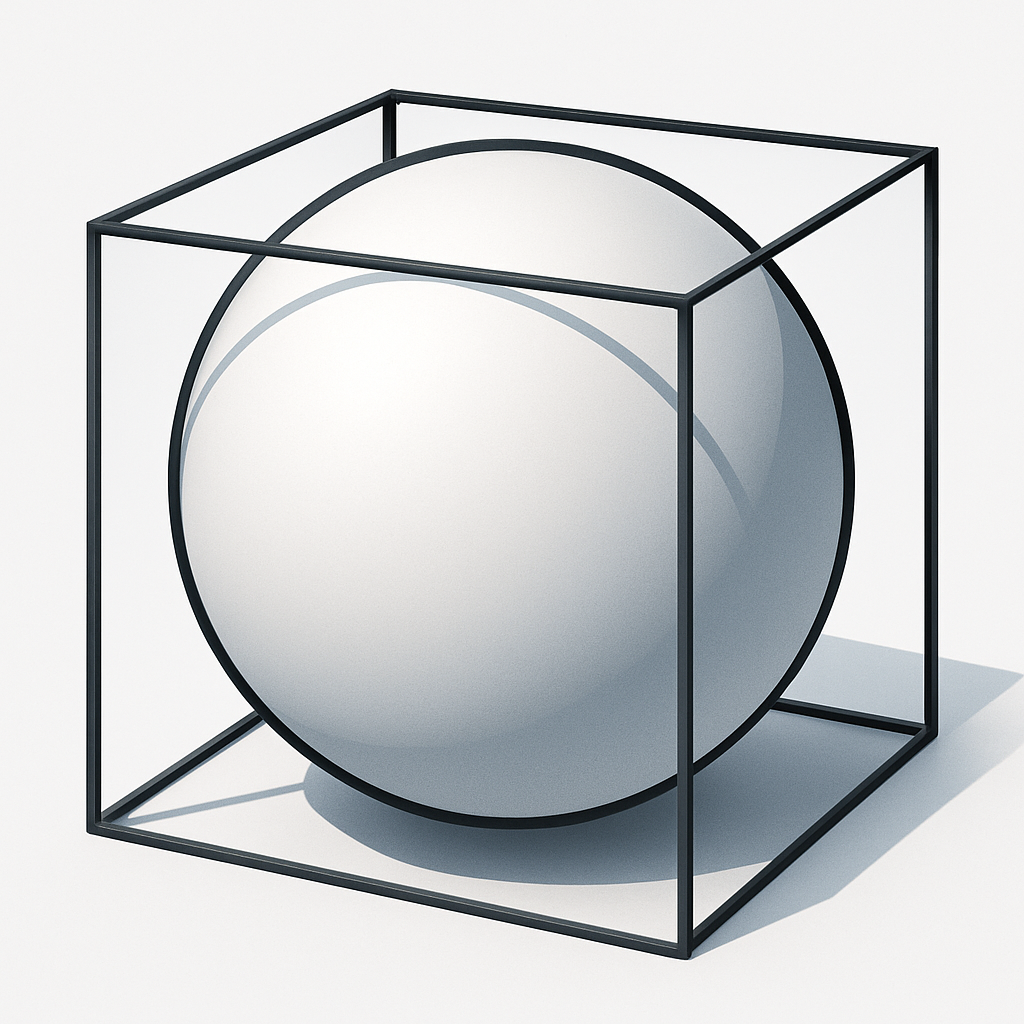
In 3D, a sphere inscribed within a cube occupies 0.5236 SVU (Square Volume Units). This consistent ratio extends GRM from 2D into 3D, dimensional coherence with a single logic.
2.1 From Circle to Sphere using GRM
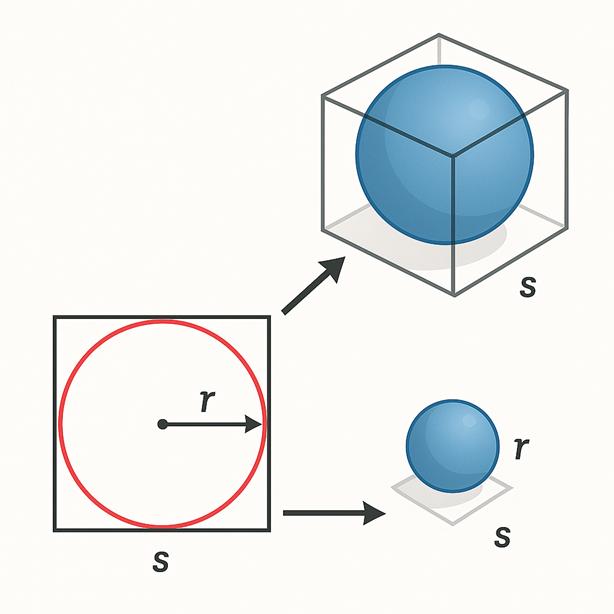
GRM maintains dimensional coherence by using the same container-first logic across dimensions.
In 2D: a circle inscribed in a square with side length s defines a fixed ratio of 0.7854 SAU (Square Area Units).
In 3D: a sphere inscribed in a cube of side s occupies exactly 0.5236 SVU (Square Volume Units).
Instead of relying on radius-based formulas (r), GRM evaluates shapes by their proportional occupation of space, always in relation to their square or cubic container. This ensures scalability, uniformity, and clarity across all dimensions.
3. GRM vs Classical Geometry – A Visual Comparison
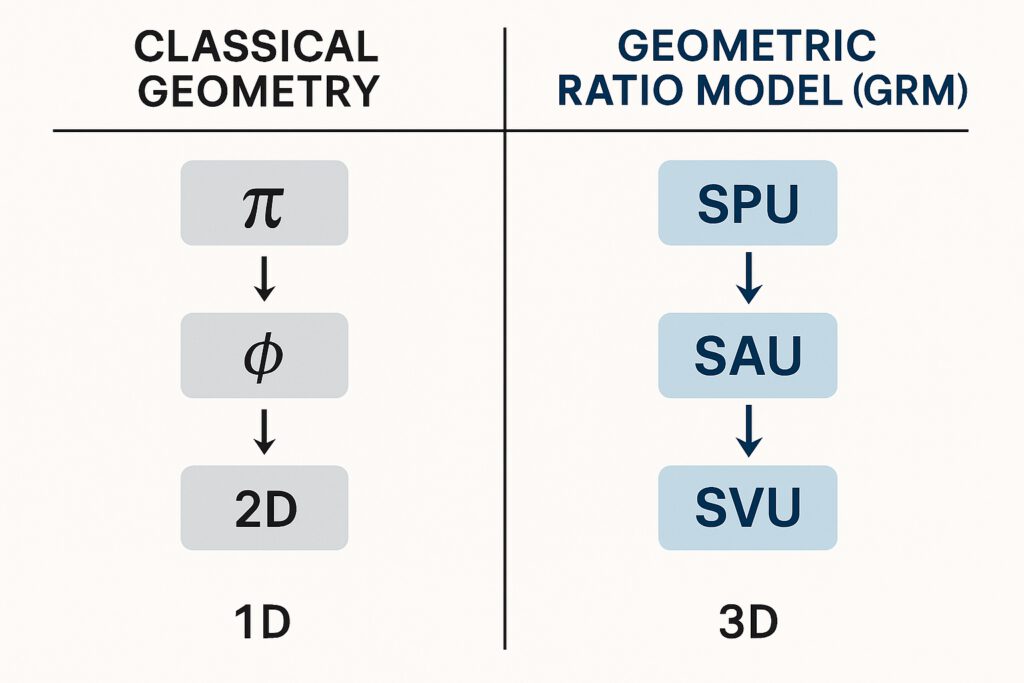
While classical geometry relies on irrational numbers (π, √2), GRM builds on rational reference frames. Shapes are always compared to their container, a square or cube, not just their radius.
4. GRM in AI Visual Generation
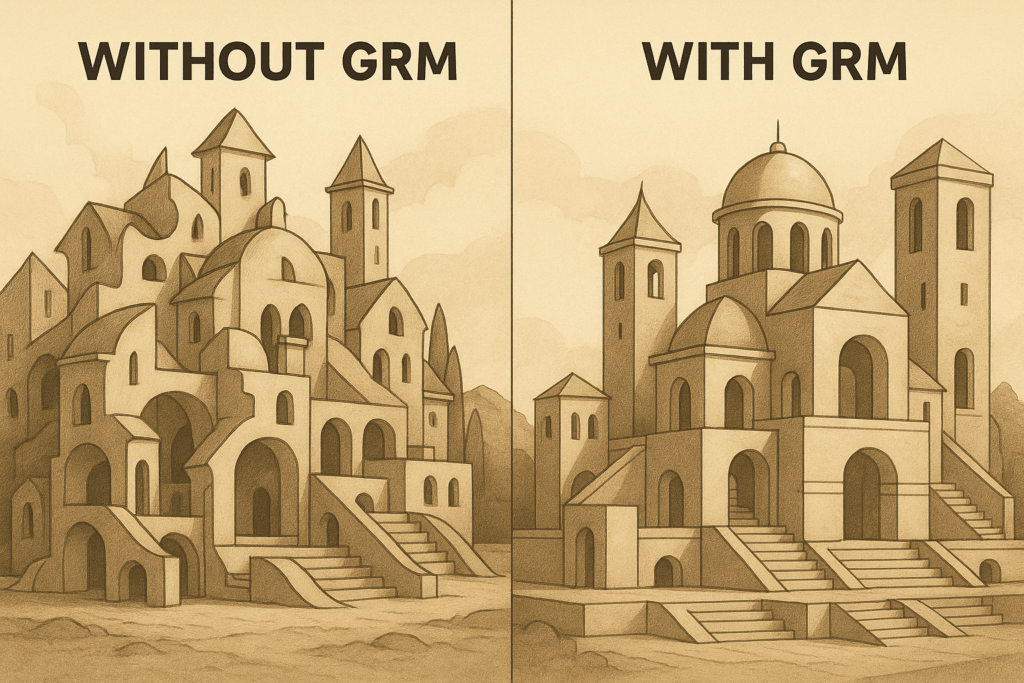
The image above illustrates two versions of the same concept, generated with and without GRM-based instructions.
On the left: a design without clear ratios, resulting in visual noise and inconsistency.
On the right: the same form structured using GRM logic, applying proportion, spatial logic, and visual coherence.
This is the power of geometric prompting: GRM enhances clarity, predictability, and aesthetic structure in AI-generated visuals.
5. Complexity Made Simple – The Power of Ratio
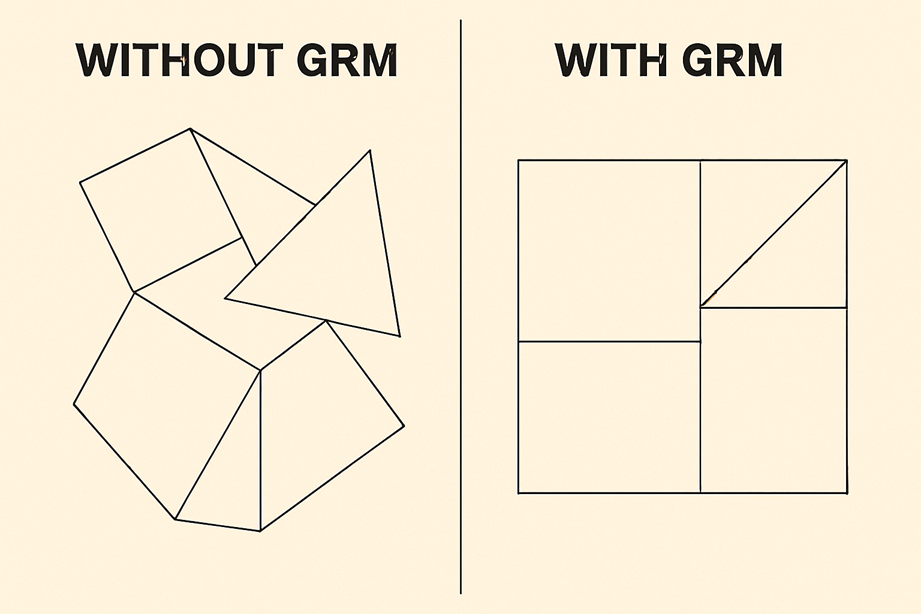
Without a clear geometric logic, even simple shapes become difficult to interpret or organize.
The left image shows disconnected forms placed without shared proportions — creating confusion and visual imbalance.
The right image applies GRM logic: each shape fits within a shared frame of reference, making the composition both readable and scalable.
This is what GRM offers: a rational foundation that brings clarity, simplicity, and coherence to complex visual systems.
6. GRM in Photorealism and Composition

Even in photorealistic settings, the principles of geometric proportion make a clear difference.
On the left: a natural scene without underlying structure.
On the right: the same image aligned using GRM’s proportional grid logic. The composition reveals hidden balance, rhythm, and visual flow.
GRM offers more than mathematical clarity, it supports aesthetic refinement, helping artists, photographers, and designers compose in harmony with our perceptual instincts.
7. To the Metaverse:
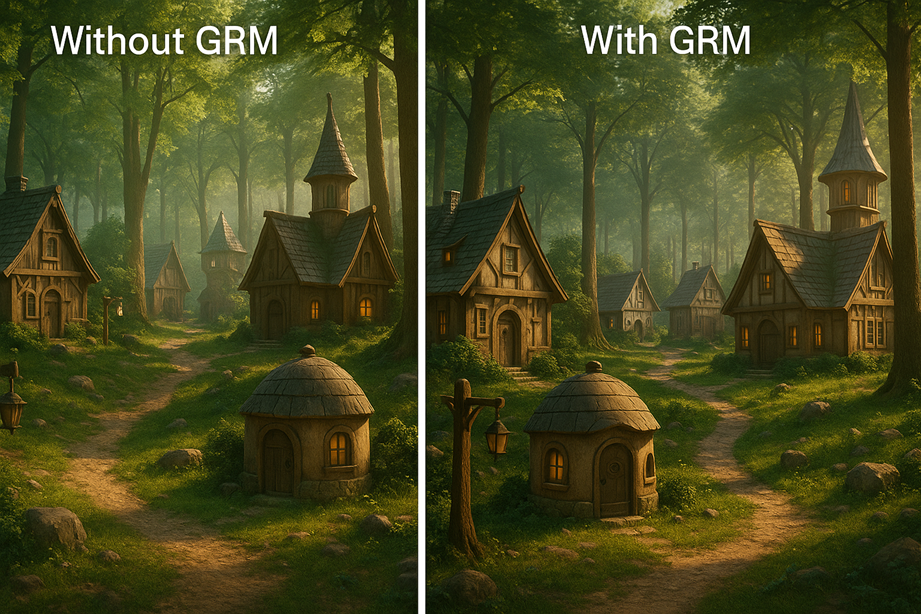
Even in fantasy or game-like environments, structure matters.
The left image shows a stylized village without underlying proportion, houses feel uneven, placement is visually imbalanced.
The right image follows GRM logic: proportional shapes, structural clarity, and visual rhythm emerge naturally.
As digital realities expand, in games, virtual worlds, and the metaverse, GRM offers a universal design grammar: intuitive, scalable, and visually aligned with how we perceive coherence and beauty.
All visuals on this page were generated with ChatGPT’s image tools, guided by prompts that apply or contrast the Geometric Ratio Model (GRM).
Each image illustrates how proportion-based logic can simplify, clarify, or improve digital and spatial design.
Want to Learn More?
Explore the whitepapers, GPT tools, and prompt templates or contact us for tailored applications.
Go to GRM Resources • Contact Us

